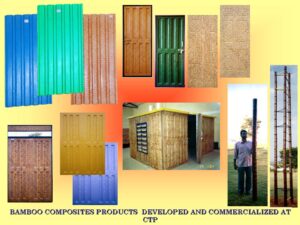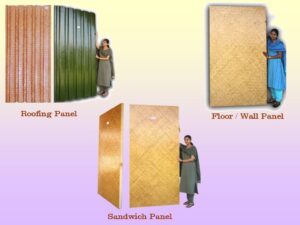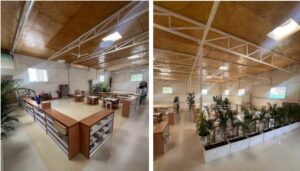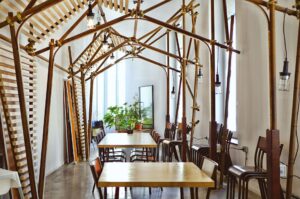In the world of modern interiors, the demand for materials that combine strength, aesthetics, and sustainability is growing. This has brought engineered bamboo panels into sharp focus — specifically the “Flatton” bamboo boards in the 8–12 mm thickness range. These boards serve as a compelling alternative to traditional hardwood panels, offering high performance while aligning with eco-conscious design principles.
What Are “Flatton Bamboo Boards”?
Flatton Bamboo Boards are engineered composite panels manufactured from woven bamboo mats, impregnated with phenol-formaldehyde (PF) resin or other high-performance resins, and hot-pressed to form strong, flat boards. While the exact term “Flatton” may be a trade name or product series, the underlying technology follows the laminated bamboo composite approach described in technical documentation: boards offering “light weight, high strength and stiffness, water/moisture resistance, fire retardant, corrosion resistant, thermal and sound insulation, impact resistance, termite-proof, non-fungus, eco-friendly and sustainable”.
Within the referenced product specification document, various thicknesses are listed (1.3 mm, 2.7 mm, 4.0 mm, etc) for flexible laminated composites. Although the exact 8–12 mm range appears to be a variant for interior architectural panels, the specification trends apply: high density, robust laminates, and engineered for demanding applications. The 8–12 mm range is suited for flat panel applications (wall, ceiling, furniture) where traditional hardwood panels might otherwise be specified.
Key Properties of Flatton Bamboo Boards (8–12 mm)
Here are some of the typical properties and benefits drawn from the specification landscape and applicable to the 8–12 mm thicker category:
High density and strength: The laminated bamboo boards cited show densities around 740–790 kg/m³ for thinner variants (1.3 mm and 2.7 mm) in the product sheet. For thicker panels (8–12 mm) one would expect equal or higher densities, translating to reliable structural performance compared to standard plywood or hardwood panels.
Water / moisture resistance: The laminated product is described as “boil water / moisture resistant.” This means the board performs better under humid conditions than many untreated wood panels.
Termite and fungus resistance: The composite is “termite proof, non fungus”. Thus, these boards are better suited for long-life interior use, especially in climates prone to pests and humidity.
Thermal and acoustic insulation: The documentation mentions “thermal / electrical insulation” and “impact resistance”. These features contribute to interior comfort and performance beyond pure appearance.
Sustainability: Bamboo is a rapidly renewable resource, and engineered bamboo products reduce dependence on slow-growing hardwoods. Also, the composite manufacturing supports efficient use of raw materials.
Flat, smooth finish and workability: The boards are designed for flat panel uses, compatible with cutting, drilling, bonding. The product sheet notes that laminated bamboo composites can be cut by conventional woodworking tools.
Applications in Modern Interiors
Flatton Bamboo Boards (8–12 mm) excel in various interior design and furniture contexts. Here are some typical applications:
Wall panelling: As flat decorative panels for residences, hotels, offices. The natural bamboo grain combined with engineered stability lends an aesthetic yet robust solution.
Ceiling panels: The 8–12 mm thickness provides adequate rigidity for ceiling applications, particularly in suspended ceiling systems or decorative soffits.
Furniture fronts and joinery: Doors, cabinet fronts, drawer facings, wardrobes. The boards provide a flat, smooth surface that can receive clear lacquer, stain, paint, or laminate ready finish.
Interior partitions: Lightweight version of panels for non-load-bearing partitions. The board thickness and performance make it suitable for modular joinery.
Architectural fit-out: Headers, bulkheads, feature walls, millwork in commercial interiors where sustainability credentials are valued.
Retrofit or refurbishment: These boards can be used to overlay existing substrates, providing a premium finish and adding durability without heavy structural change.
Advantages of Flatton Bamboo Boards
Balanced strength, form and finish: At 8–12 mm thickness, the boards provide structural stiffness while remaining workable and manageable for interior installations.
Sustainable material choice: Using renewable bamboo mitigates ecological impact compared to slow-growing hardwoods.
Durable performance: With good moisture, termite and fungal resistance, these boards will perform better in demanding interior environments.
Aesthetic versatility: They offer the natural bamboo texture and can receive various finishes, giving design flexibility.
Ease of fabrication: Compatible with standard woodworking tools and adhesives; reduces complexity in joinery and installation.
Reduced maintenance: Thanks to the composite nature and resistance properties, over time they will likely require less repair than traditional panels.
Environmental credentials: Ideal for projects seeking green building materials, given bamboo’s renewability and the engineered board’s long lifecycle.
Limitations / Considerations
Initial cost: Engineered bamboo composite boards may carry a higher upfront cost compared to commodity plywood or MDF panels; the long-term value comes from durability and sustainability.
Finish and protection: Although moisture resistant, correct sealing and detailing (especially at edges and joints) is important to avoid moisture ingress or swelling.
Availability and supply: Depending on region, high-quality engineered bamboo boards in 8–12 mm thickness may require lead time or import, so project planning is important.
Finish uniformity: As with natural-based panels, some variation in grain and tone may occur. If very tight colour matching is required, this should be addressed in specification and sample stages.
Edge and joint detailing: For visible installations (walls, ceilings), edge treatments and fixation must be quality controlled to maintain aesthetic and performance integrity.
Structural limits: Although strong for panel uses, these boards are not always designed for heavy structural loads; for truly structural uses designers must ensure compliance with engineering standards.
Frequently Asked Questions (FAQs)
Q1: Is an 8–12 mm thick board suitable for wall and ceiling cladding?
Yes. Boards in the 8–12 mm thickness range strike a strong balance between rigidity and manageability for wall and ceiling applications. They provide enough stiffness to avoid waviness and can be installed effectively as panelling.
Q2: Can these bamboo boards be used for flooring?
While 8–12 mm boards may serve as overlay panels or as part of a flooring system, for heavy traffic or structural flooring one would typically look at thicker panel systems designed for that purpose. Always check specification and expected load.
Q3: How do they compare with traditional hardwood panels in strength?
Engineered bamboo laminated boards (including those in the 8–12 mm range) show very competitive strength/density profiles compared to hardwoods, and offer better performance in moisture, termite resistance, and dimensional stability. The referenced specification shows densities around 740-790 kg/m³ for thinner boards, which is comparable or even superior to many hardwood composites.
Q4: Are these boards eco-friendly?
Yes. Bamboo is a rapidly renewable resource, and its engineered use in laminated boards means more efficient utilisation of raw material. The composite board also supports longer life, reducing replacement and waste.
Q5: Can they be finished like wood — stained, painted, polished?
Yes. The boards have a flat, smooth surface and are compatible with conventional finishes: paint, polish, veneer overlay or laminate. The choice of finish will depend on the design intent.
Q6: What about installation and joints?
Installation should follow good joinery practices: accurate substrate preparation, appropriate adhesive or mechanical fixings, sealing of edges and joints, and allowance for movement. Because of the board’s engineered stability, it tolerates standard interior conditions well, but detailing remains vital for performance.
Q7: What maintenance is required?
Maintenance is relatively minimal: normal cleaning, avoiding prolonged wet exposure, and periodic inspection of fixings/joins in high-use installations. Thanks to the board’s roasted/laminated nature and resistance properties, major maintenance demands are reduced compared to some natural wood panels.
Conclusion
Flatton Bamboo Boards in the 8–12 mm thickness range offer a modern solution that balances strength, form, and sustainability in one material. They align well with contemporary interior design demands — offering natural aesthetics, engineered durability, and eco-credentials. For architects and interior designers seeking materials that serve both functional and aesthetic goals, these boards represent a smart upgrade over traditional hardwood panels.
In specifying Flatton Bamboo Boards, ensure that the board quality, thickness, finish, edge treatment, and installation detailing are aligned with the project’s performance expectations. When done correctly, they deliver interiors that look beautiful, perform reliably, and respect the environment.






